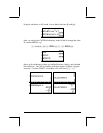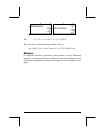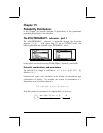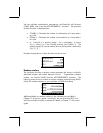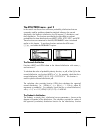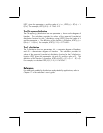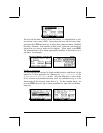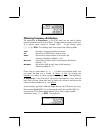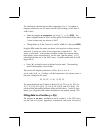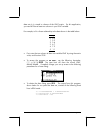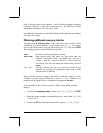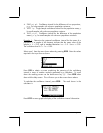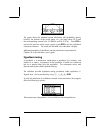
Page 16-3
Obtaining frequency distributions
The application 2. Frequencies.. in the STAT menu can be used to obtain
frequency distributions for a set of data. The data must be present in the form
of a column vector stored in variable ΣDAT. To get started, press
‚Ù˜ @@@OK@@@. The resulting input form contains the following fields:
ΣDAT: the matrix containing the data of interest.
Col: the column of ΣDAT that is under scrutiny.
X-Min: the minimum class boundary to be used in the
frequency distribution (default = -6.5).
Bin Count: the number of classes used in the frequency distribution
(default = 13).
Bin Width: the uniform width of each class in the frequency
distribution (default = 1).
Given a set of n data values: {x
1
, x
2
, …, x
n
} listed in no particular order, one
can group the data into a number of classes
, or bins by counting the
frequency
or number of values corresponding to each class. The application
2. Frequencies.. in the STAT menu will perform this frequency count, and will
keep track of those values that may be below the minimum and above the
maximum class boundaries (i.e., the outliers
).
As an example, generate a relatively large data set, say 200 points, by using
the command RANM({200,1}), and storing the result into variable ΣDAT, by
using function STOΣ (see example above). Next, obtain single-variable
information using: ‚Ù @@@OK@@@. The results are:



